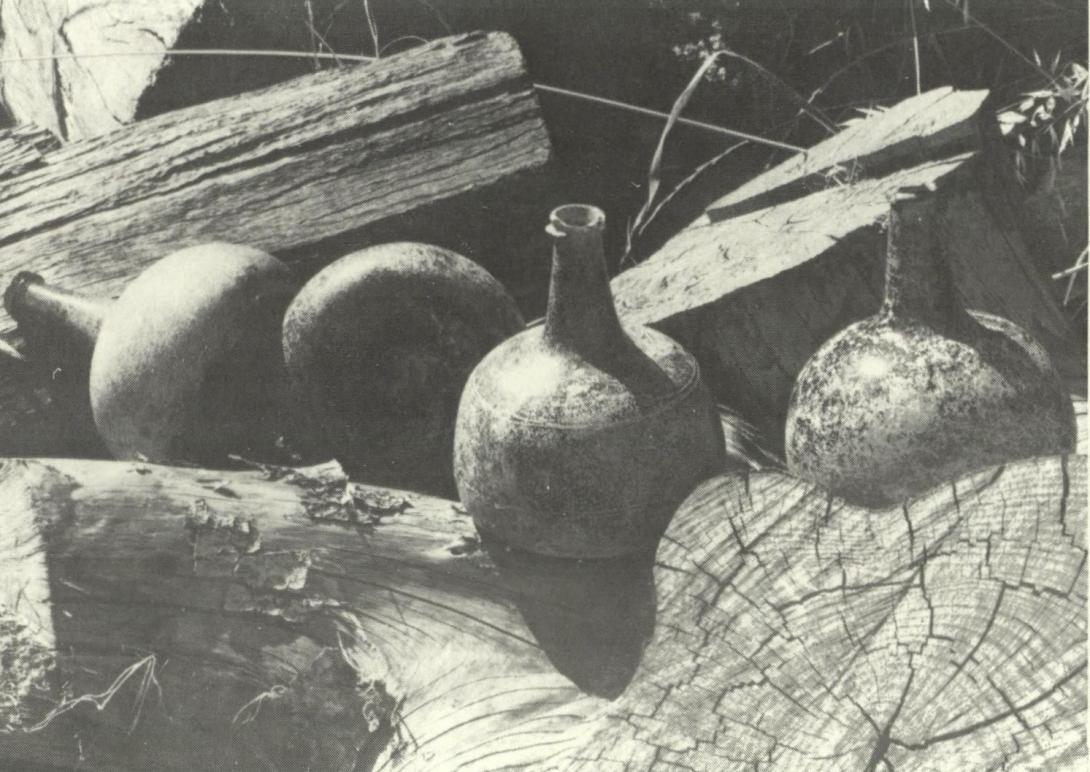
The Bottle Cabinet
Glass is a most practical substance which, for centuries, has been used for a vast range of applications. Large quantities of glassware were sent from the Netherlands to the East Indies in colonial times and some outstanding examples of the bottle maker’s art can be seen here. Drinkers and bottle collectors alike will instantly recognise the classic, square Dutch gin bottle. The design is a very old one, dating back to the beginning of the Dutch distillation of gin, ‘jenever’, in the early 1500s. The bottles were made square-sided to enable them to be closely packed in crates, for transport both within the Netherlands, and overseas. Specimens like these, from Zeewijk, wrecked on the Abrolhos Islands in 1727, may have been general cargo or have been among the trade goods being taken to the East Indies by the ship’s own officers for sale for personal profit.
The other bottles, the large ‘onion’ shaped ones, were used for the storage and transport of a wide range of liquids. One wonders how can objects as delicate as these have survived for over 250 years in a wreck, on a reef, being pounded by the surf?
Modern Dutch bottles, which are still made in the traditional square shape, often have the marking JDKZ on them. This stands for ‘Jenever De Kuyper Zaanstadt’. To this day jenever remains the most popular spirit in the Netherlands.

Middle Island, where Zeewijk material was found. Pencil drawing by William Westall, 1802.
Credit: National Library of Australia 2096091

Glass fragments cabinet
Credit: WA Museum